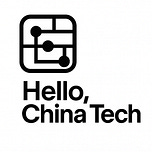📋 Quick Reader Survey
Before you dive into today’s podcast, I’d love 2 minutes of your time to help shape Hello China Tech’s future. I’m planning some exciting content updates for 2025, and your input is invaluable.
The survey is completely anonymous, and I’ll share key findings next week. Now, let’s get to today’s podcast.
Episode Overview
This episode examines CXMT’s massive $21 billion IPO as the ultimate test of China’s “Hefei Model”—where local government acts as venture capitalist in strategic industries. Hosts Alex Chen and Marcus Thompson explore how a provincial capital created a replicable playbook for government-led tech investing through successes with BOE, NIO, and now memory chip manufacturer CXMT. They analyze the financial sustainability challenges, geopolitical risks, and global implications of this approach as cities worldwide adopt similar strategies.
Timestamped Highlights
00:00 - Introduction & CXMT Overview
02:30 - The Hefei Government Partnership
04:30 - BOE Case Study & Model Evolution
08:00 - NIO Rescue & Validation
09:30 - Structural Challenges & Risks
13:30 - Geopolitical Impact & Investment Analysis
15:30 - Global Implications & Conclusions
Key Takeaways
Government as VC Pioneer: Hefei has refined a 15-year playbook where local government acts as strategic anchor investor, de-risking projects for private capital while maintaining sophisticated financial engineering rather than simple subsidies.
Ecosystem Creation Over Single Bets: The model focuses on building industrial clusters rather than individual company success, with BOE spawning 100+ display companies and NIO attracting major automotive investments to create comprehensive ecosystems.
Structural Sustainability Crisis: The funding mechanism faces critical challenges as land sales revenue (primary LGFV funding source) declined 38% in 2023, while debt-laden local governments double down on high-risk tech ventures.
Duplication Creates Overcapacity: Dozens of Chinese cities copying the Hefei playbook in identical sectors (EVs, semiconductors, batteries) risks creating wasteful competition and price wars that can destroy even well-managed companies.
New Investment Risk Framework Required: Investors need to evaluate government fiscal health, geopolitical exposure, and sector overcapacity risks alongside traditional metrics, as holdings become more correlated than conventional analysis suggests.
Global Industrial Policy Test Case: CXMT’s $21 billion IPO represents a real-time experiment in whether governments can successfully scale venture capitalist approaches in capital-intensive industries, influencing policy worldwide.
China Tech Context & Market Intelligence
Market Dynamics: China’s memory chip market represents a strategic vulnerability, with hundreds of billions in annual imports creating dependency on Korean and US suppliers. CXMT’s challenge involves breaking a technological oligopoly while achieving the massive scale required for competitive unit costs in manufacturing.
Regulatory Landscape: The Hefei Model operates within China’s broader industrial policy framework but faces increasing scrutiny from central government officials warning against “blind launching and redundant construction.” International regulatory pressure includes EU anti-subsidy investigations and potential US equipment export restrictions.
Global Implications: The success or failure of government-as-VC approaches influences industrial policy worldwide, with the EU launching similar funds and the US deploying CHIPS Act subsidies. The model’s scalability determines whether China can achieve technological leadership in strategic sectors.
Cross-Market Comparisons: Unlike Silicon Valley’s private VC ecosystem or European government grants, the Hefei Model represents hybrid public-private investment with longer time horizons but facing unique fiscal sustainability challenges that traditional markets don’t encounter.
Companies & Technologies Mentioned
Major Players:
CXMT (Changxin Memory Technologies) - Chinese DRAM manufacturer seeking $21B IPO
Samsung, SK Hynix, Micron - Global memory oligopoly controlling 95% market share
BOE - Display manufacturer that became Hefei’s first major success story
Emerging Companies:
NIO - Electric vehicle company rescued by Hefei investment in 2020
GigaDevice - Founder Zhu Yiming’s previous successful semiconductor venture
Technologies:
DRAM memory chips - DDR4 commercial production achieved, competing in most capital-intensive semiconductor segment
LCD display manufacturing - 20% global market share achieved through Hefei ecosystem
Investment Rounds:
CXMT IPO filing for $21 billion represents one of largest Chinese tech offerings
NIO rescue involved $1 billion from Hefei state-led investors for 24% equity stake
BOE investment of $1.3 billion represented half of Hefei’s fiscal revenue in 2008
Resources & Further Reading
The Geopolitical Arbitrage Playbook: Inside the High-Stakes IPO Rush of China’s AI Chipmakers
The $21B Bet: Inside China’s Most Successful Government VC Story
Follow & Support
Subscribe to the Newsletter: For more in-depth analysis, subscribe to the Hello China Tech newsletter on Substack.
Our Production Process: For a detailed explanation of our production process and our principles on using generative AI, please read our full statement: https://hellochinatech.substack.com/p/podcast-ai-statement







